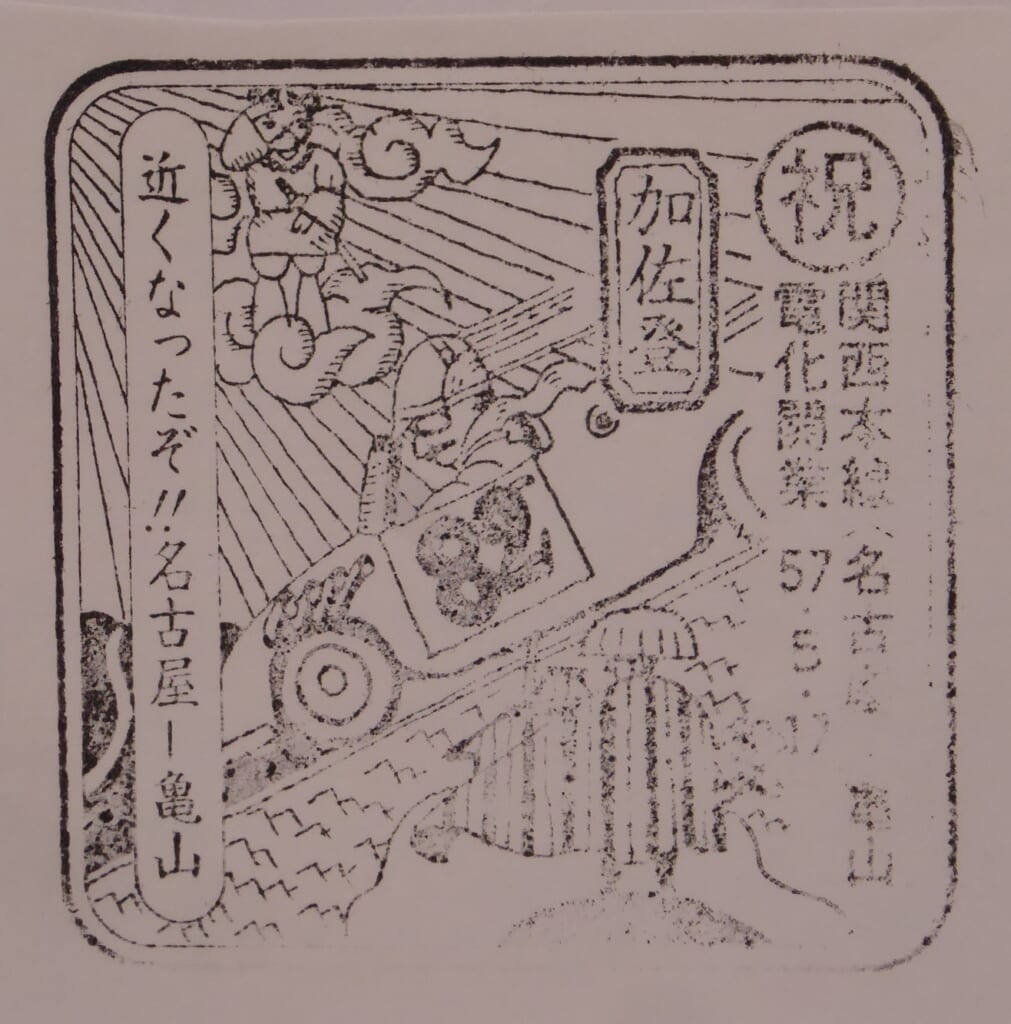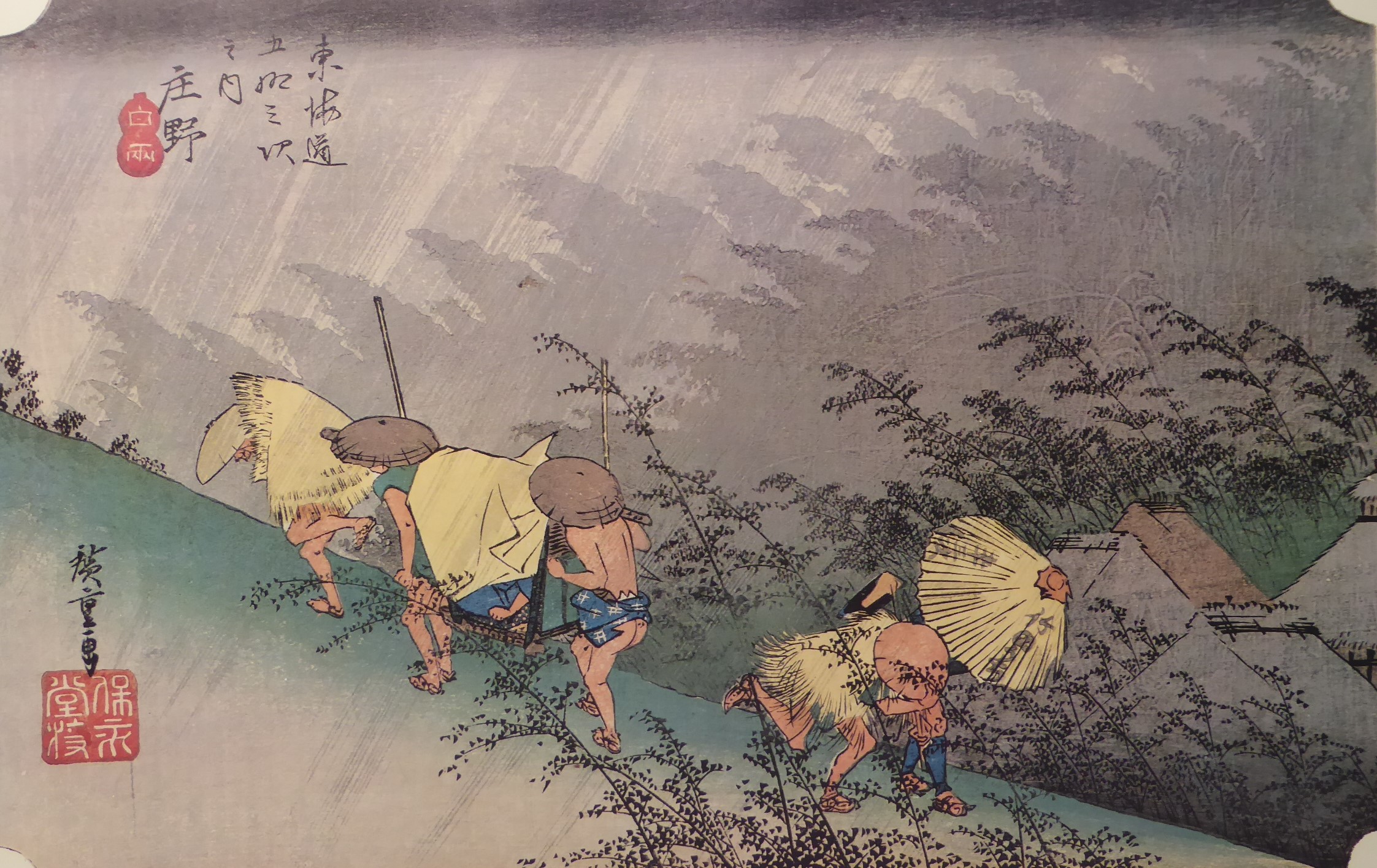Explanation of the Fifty-three Stations of the Tokaido 46 Shono
7.9km from Kameyama to Shono: 34°53′00″N 136°31′29″E
Shono is the 45th post station on the Fifty-three Stations of the Tokaido.
It is now in Suzuka City, Mie Prefecture.
It is just under 3km from Ishiyakushi to Shono, the second shortest on the Tokaido.
Shono was established in 1624, the latest on the Tokaido.
Like Ishiyakushi, it seems that the management of the inn was difficult.
Initially, the number of successors and horses was set at 100.
In 1758, the number of successors and horses was reduced to 30 and 20.
Currently, Shono is a quiet town sandwiched between National Route 1, which runs along the left bank of the Suzuka River, and the JR Kansai Main Line.
The townscape also retains many old buildings and retains the old atmosphere.
At that time, the post town had one honjin, one wakihonjin, 15 inns, and a population of 855.
You can learn more about Shono-juku at the Shono-juku Museum, which has been converted into a history museum of Shono-juku.
The Shono-juku Museum occupies a wooden, two-story, gabled, shallow-tiled house built in October 1854.
The building is known as the “Former Kobayashi Family Residence,” and on March 12, 1996, part of the main house and the storehouse were designated as tangible cultural properties of Suzuka City.
During the Edo period, the Kobayashi family ran an oil wholesale business.
The building is said to be a “large townhouse” from the end of the Edo period, and the ridgepole sign from the time of its construction still remains.
The building was purchased by Suzuka City, and part of the main house was restored to its original appearance.
The exhibits mainly include documents and materials (materials related to the wholesaler, guest registers, notices, etc.) that record the activities of the post town, including documents related to Shono-juku, which are designated cultural properties by Suzuka City.
① “Hoeido version”
Shono is considered one of the best masterpieces in the Hoeido version of the “Fifty-three Stations of the Tokaido” series.
It has the subtitle “White Rain.” “White Rain” refers to a violent rain shower. The painting depicts travelers caught in a sudden rain shower on a hill on the highway, running off in search of a place to shelter, with a dynamic expression.
In the foreground, a palanquin carrier is desperately running up a steep slope, and a traveler and a farmer are rolling down the slope.
To express the scene of a violent rain shower, the rain is depicted falling at right angles to the slope, the sky is blurred to resemble dark rain clouds, and the bamboo forest is smothered in raindrops and light and dark.
The traveler’s umbrella is clearly advertised as “Take no Uchi” or “Fifty-three Stations,” indicating the publisher. This advertising text is included in the first edition.
“Shono” is considered a masterpiece on par with “Kambara.” While “Kambara” has the theme of heavy falling snow, “Shono” depicts a heavy rain shower. People are also moving in the painting. There is a contrast between stillness and movement. There is also a contrast between the seasons of winter and summer.
② “Gyousyo version”
A scene at a wholesaler’s market.
Someone is loading their horses, tying the laces of their straw sandals, and talking to an official.
It expresses the atmosphere before departure.
③ “Reisyo version”
A scene of people warming themselves by a bonfire because of the cold winter sky.
A lonely scene with few people around.
④ “Hokusai version”
A scene of cowherd children playing.
⑤ “Travel image”
Kasado Station.
⑥ “Stamp image”
A stamp from Kasado Station.
Hoeido version

Gyousyo version
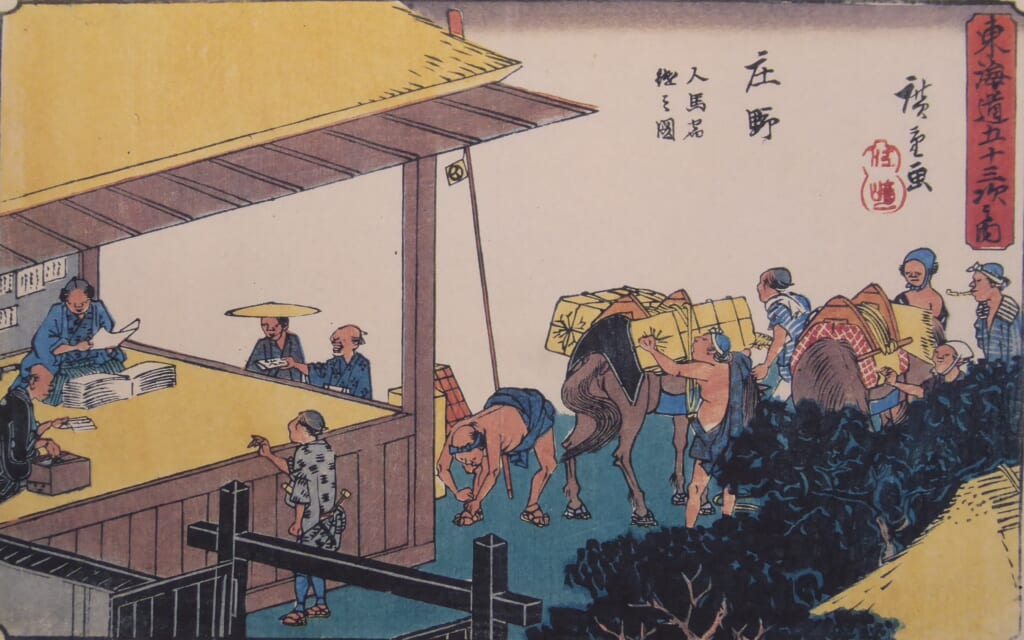
Reisyo version
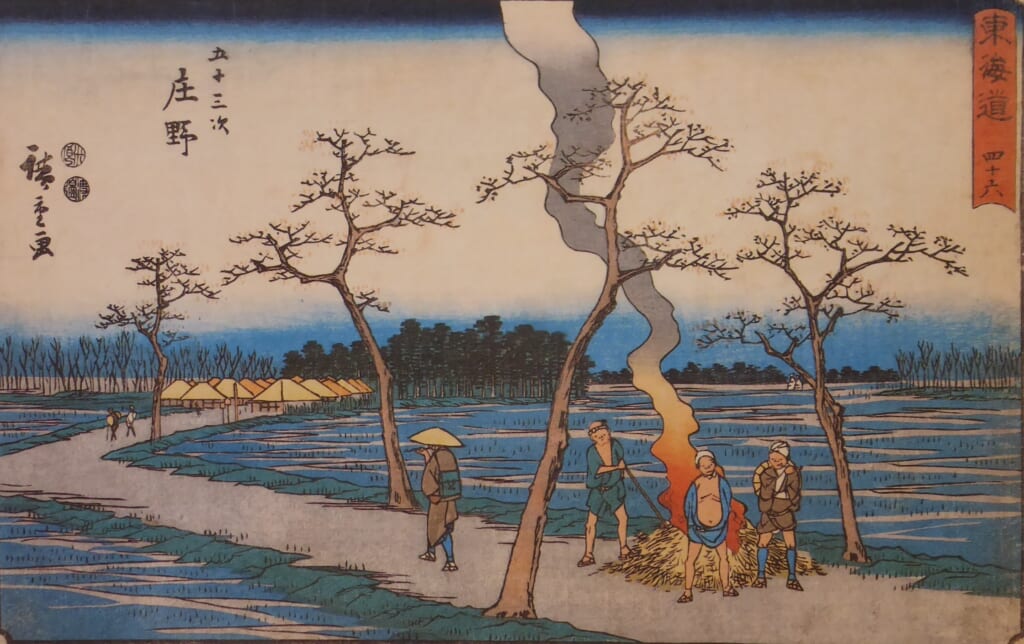
Hokusai version
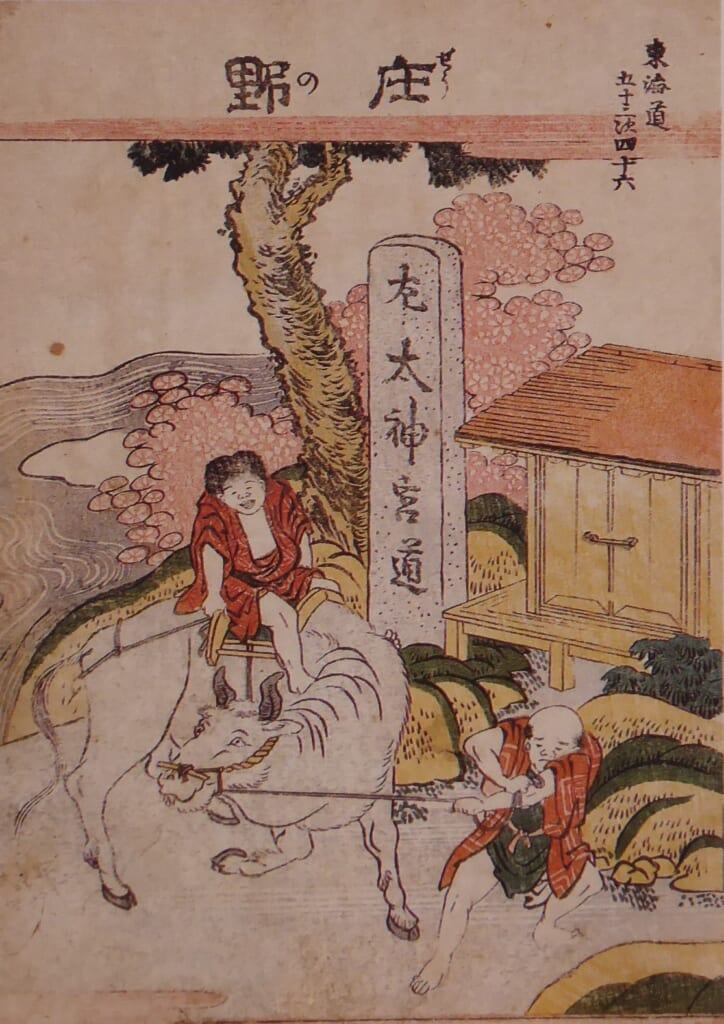
Travel image
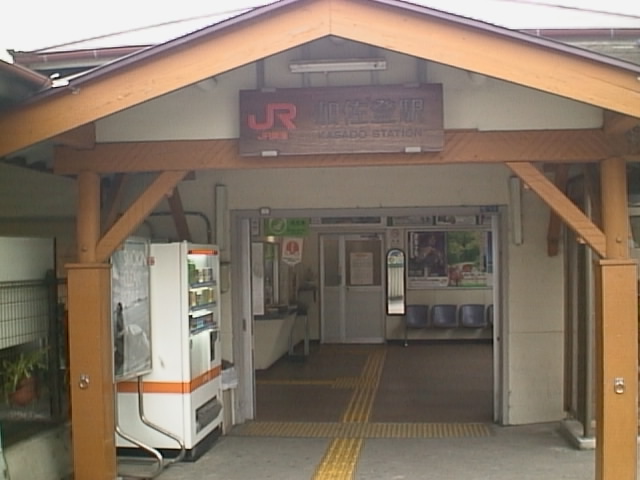
Stamp image
